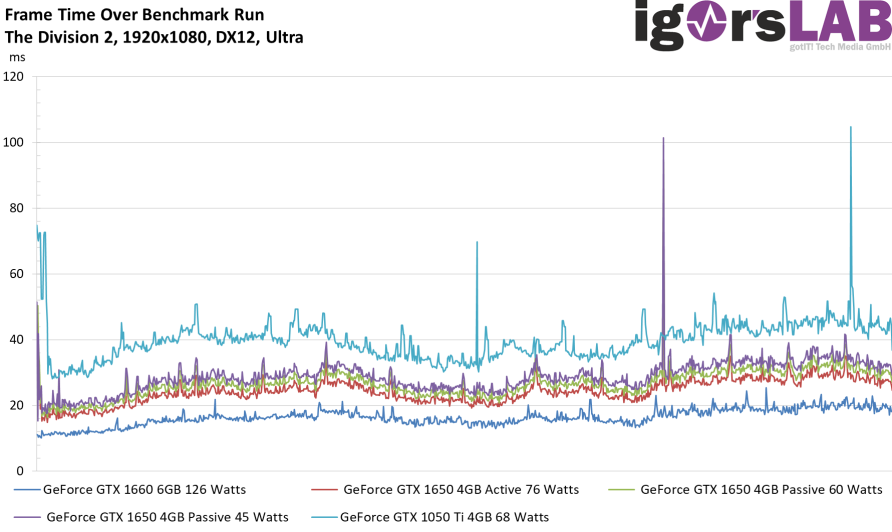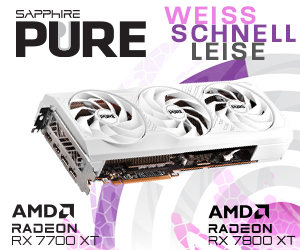Gaming Performace
With The Division 2, I picked out a game that is both as up-to-date as possible and allows good and playable frame rates with graphically still quite appealing settings. There are even games with much higher FPS, where then the differences between the settings become a little more blurred. Because today we are talking about clear demarcations and not about lucky hits. Let's first look at the FPS and the 99. Percentile as bar chart:

There are approx. 7 FPS, which corresponds to a total output of more than 84%. This is roughly exactly the same as what we lost in boost clock on average. The realisation is that the performance of the GeForce GTX 1650 in these areas scales almost perfectly with the boost clock and the RAM doesn't matter at first, even if it's a bit underclocked! The slightly thirstier GeForce GTX 1050 Ti is even grandiosely furnished by the current savings bun.

The performance gap can also be fixed very nicely with the percentiles, whereby we can also record an almost frighteningly linear scaling to the beat.

The frametime values of the two profiles follow this realization like a dachshund, only the GeForce GTX 1050 Ti falls off extremely here. But we already had that with the FPS.

If you look at the superimposed curves of rendering times for each frame, this observed trend does not change. The curves are surprisingly well-adjusted if the values are adjusted accordingly. extrapolated so that they fit into the diagram later, despite the different number of frames.

The variances are similar. There are some minor differences in detail, but they should probably be subordinated to the tolerance range of the benchmark process.

The Unevenness index as a bar chart is then something like the final statement and it shows very nicely that even the most economical variant can still keep up quite well, while the GeForce GTX 1050 Ti becomes once again a foot-stopper.

Summary and conclusion
The conversion has been successful, no matter what interpretation of the power target. If you want to be on the safe side, the 47-watt version gives you a powerful card that is still powerful in its class, which is as efficient in the combination of power consumption and gaming performance as we have never seen before. Thus, the TU117-300 almost cries out for passive cooling and/or other form factors such as Low-profile or single-slot. Or both.
It's just a pity that the Turing encoder has been saved, whereby you can use this card with OBS well for streaming, even if with the same settings and bitrates slightly more artifacts occur. But that is also a matter of need. The real strength, however, lies in the still good performance in passive conversion. Thus, a silent HTPC can make a real mood on home TV, because the graphics performance is far above that of an APU. You always have to weigh up where the fun factor has to help to spice up the sense a little bit. After all, there are also active cards that act in a whisper-quiet manner.
Play instinct and craftsmanship are certainly more in the foreground here, but you can also throttle the cards without immediately resuming the fan. Then the active cooling of the MSI GTX 1650 Gaming X only runs after approx. 7 minutes. So it is something like a small E-hybrid, which can also drive electrically at least on the first few kilometers. If you like it completely, just build. Even if he didn't have to. And yes, the Arctic Accelero S1 is still suitable today.
































Kommentieren